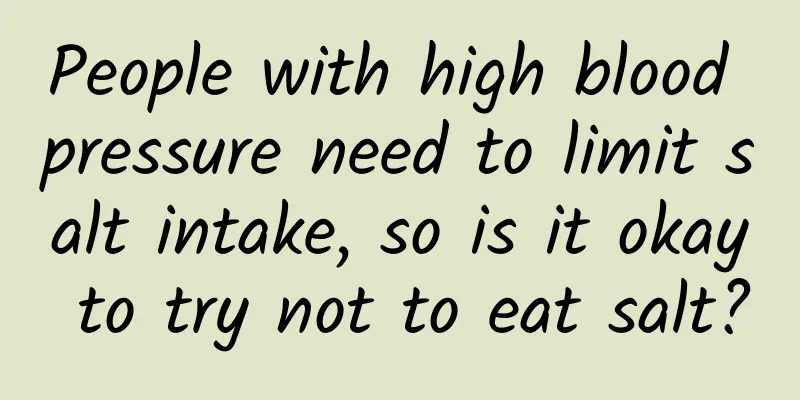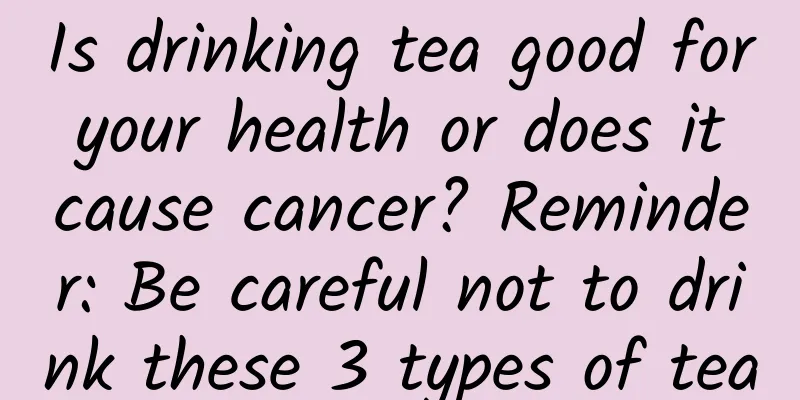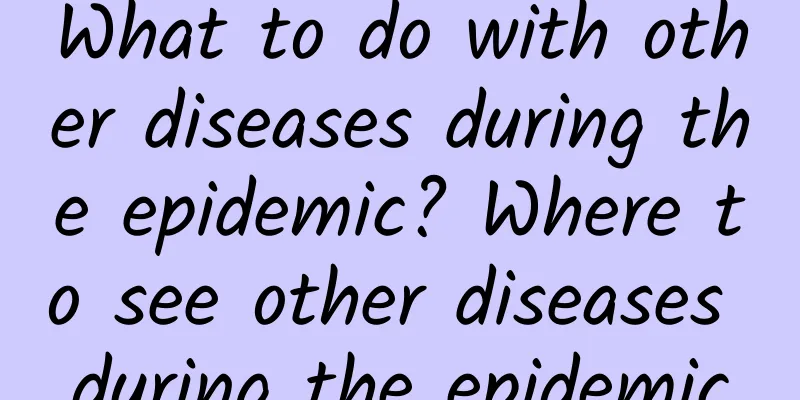People with high blood pressure need to limit salt intake, so is it okay to try not to eat salt?

|
Author: Xin Yawen Qinghai Provincial People's Hospital Reviewer: Zhao Jie, Chairman of the Chinese Medical Association Clinical Pharmacy Branch, the First Affiliated Hospital of Zhengzhou University, Professor of Pharmacism Salt is not only an important seasoning for cooking, but also an essential substance for the human body. Salt intake has a significant impact on physical health. We often hear doctors or pharmacists repeatedly emphasize to people taking antihypertensive drugs: In order to avoid high blood pressure, it is necessary to control diet, especially limit salt intake. So, why does long-term excessive salt intake lead to high blood pressure? How much salt should a normal person consume every day? Is it possible to avoid salt as much as possible? 1. How does salt affect blood pressure? The main component of salt is sodium chloride, and the sodium it contains is the main reason why it affects blood pressure. 1 gram of salt contains about 350 mg of sodium (hint: the mass of salt divided by 2.5 is the sodium content); if it is low-sodium salt, the sodium content will be lower. There are two main reasons why sodium affects blood pressure. 1. The amount of sodium excreted by the body every day is limited. Excess sodium will be retained inside the blood vessels. High sodium will attract water and remain in the blood vessels, causing increased blood pressure. 2. Increased blood pressure will increase the burden on the heart and kidneys, further increasing sodium excretion disorders and forming a vicious cycle. High sodium in the diet is an important cause of cardiovascular diseases such as high blood pressure, so the World Health Organization recommends that the average person consume no more than 5 grams of salt per day, while my country recommends that adults consume a maximum of 6 grams of salt per day (that is, the sodium content is less than 2 grams). 2. The daily salt requirement is 6 grams. Do we still need to use a scale to measure our meals? In order to more intuitively present the daily salt intake of an adult, you can roughly understand how much 6 grams of salt is by looking at the figure below. Figure 1 Copyright image, no permission to reprint In addition to the salt that is added, the salt we consume in our daily lives also includes "invisible salt" that is not easy for us to see, such as the "sodium content" in the nutrition label of the food packaging, which actually means that it is invisible salt. Therefore, in addition to paying attention to how much salt is added to the dishes, we should also pay more attention to the nutrition labels on the food packaging, especially the "sodium content", and eat less salty snacks. In addition, commonly used condiments such as chicken essence and soy sauce contain more sodium. When adding these condiments during cooking, the amount of salt should be reduced. Low-sodium salt can also be used instead of table salt. Finally, share a life tip: add salt at the end of cooking, use less, and the dishes will taste fresh. Figure 2 Copyright image, no permission to reprint 3. What is the difference between low sodium salt and regular table salt? In order to help Chinese people reduce their sodium salt intake, a kind of "low sodium salt" has appeared on the market. It is usually marked "low sodium salt" on the outer packaging bag. If you look carefully, you can find the ingredient "potassium chloride" in the food ingredient list. Low sodium salt, also known as potassium salt, is a salt made from edible sodium chloride, potassium chloride and magnesium sulfate in a reasonable ratio. Compared with ordinary table salt, the sodium content of low sodium salt is 60% to 70% of that of ordinary sodium salt, and the rest is replaced by potassium salt. Increased potassium intake can protect the cardiovascular system, but although potassium salt is good, it should be noted that it is safer for people with normal renal function to consume potassium salt; while people with abnormal renal function will experience hyperkalemia if they consume potassium salt, and in severe cases, they will also experience severe arrhythmias. 4. What are the benefits of salt restriction for patients with hypertension? Long-term salt intervention can help lower blood pressure and reduce the amount of antihypertensive drugs taken by hypertensive patients. The normal blood pressure of people in my country is generally no more than 140/90 mmHg (the standards for different populations vary). The recommended daily sodium intake per person is less than 6 grams, which can be expected to reduce systolic blood pressure by 2 to 9 mmHg. For every 2 grams of sodium salt added to food, systolic and diastolic blood pressure can be increased by 2.0 mmHg and 1.2 mmHg, respectively. It should be noted that this data is the average value of the degree of blood pressure reduction in a large number of test populations, and the specific effect may vary from person to person. Through data comparison, we can know that controlling the amount of salt can also reduce blood pressure. Eating less salt in exchange for less medicine is economical and healthy, so why not do it? 5. Although patients with hypertension need to limit salt intake, excessive salt restriction is not advisable! Since high sodium has so many harmful effects, is it okay to just not eat salt? The answer is of course no! Because sodium ion is one of the essential mineral elements of the human body, it has a wide range of functions, including maintaining cell osmotic pressure and participating in maintaining normal neuromuscular excitability. The normal blood sodium value of an adult is between 135 and 153 mmol/L. If it is less than 135 mmol/L, symptoms of hyponatremia such as drowsiness and mental depression will occur. If the blood sodium level is further reduced, severe hyponatremia may occur; if the blood sodium level is less than 120 mmol/L, it may even be life-threatening. In addition, studies have found that people who have a long-term low-sodium diet or a high-sodium diet have a higher risk of cardiovascular disease, while moderate salt intake can reduce the risk of cardiovascular disease. Therefore, "salt restriction" does not mean "no salt", and excessive salt restriction is not advisable. The balance of the electrolyte environment in the body is the most critical. |
<<: What happens in your brain when you see likes on your Moments?
>>: App Annie: Mobile App Index for May 2014: Meipai tops iOS download rankings
Recommend
Can I jog while menstruating?
In fact, you should be extra careful when you are...
What to do if your arms get sore while rock climbing? Which muscles does rock climbing exercise?
Rock climbing is a very good sport that requires ...
Is it still feminine after hysterectomy?
After a hysterectomy, women will feel more relaxe...
Why does the vulva itch?
After getting married, many women become full-tim...
What is the difference between black dates and black dates? How to clean black dates?
Black dates are also called damsons and milk date...
Eyes age faster than skin! 6 tips to maintain your eyes and look beautiful
Eyes are the windows to the soul and also little ...
NetQin Releases 2017 Q1, Q2 and Q3 Financial Reports
BEIJING, December 15, 2017 – NetQin Inc. (“NetQin...
I had sex when there was still some bleeding during my period.
Sexual life is an act that occurs between couples...
The whole process of cesarean section
Caesarean section is a relatively common method o...
What is amyloidosis? What happens if it affects the kidneys?
Author: Liu Gang, Chief Physician, Peking Univers...
White lochia with a foul odor
Lochia is something that every mother will experi...
Vulvar itching before menstruation
Women's menstruation is mainly to eliminate w...
What color is normal for vaginal discharge?
Every woman has periodic discharge, which is norm...
How many months of pregnancy can you establish a party case
Creating a pregnancy record is the most discussed...
You can lower your blood pressure without dieting. Check out this high blood pressure diet guide
Contributed by "Panda Medical Cartoons"...









